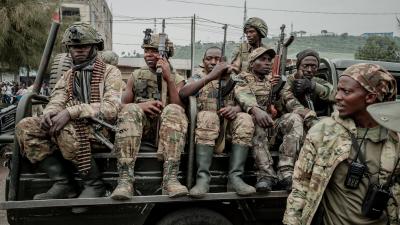Congolese have been driven into one of the world’s worst food crises

ROME – According to new IPC data, a combination of conflict and rising food prices has driven the Congolese into one of the world’s worst food crises with an additional 2.5 million people being pushed into acute food insecurity.
The Food and Agriculture Organization of the United Nations (FAO) and the United Nations World Food Programme (WFP) announced Thursday that new data from the Integrated Food Security Phase Classification (IPC) analysis revealed the highest number ever recorded of acutely food insecure populations in the Democratic Republic of the Congo (DRC).
Now 28 million people in DRC are facing acute hunger every day, a number that has increased by more than 2.5 million this year, since the most recent outbreak of violence in December. More alarmingly, 3.9 million of these people are experiencing ‘emergency levels of hunger’. Amongst the most vulnerable are those escaping violence in the region, with over 2 million displaced people accounting for over half the amount of people experiencing emergency hunger.
Eric Perdison, WFP’s Regional Director for Southern Africa and ad interim WFP DRC Country Director commented that “the humanitarian situation in the DRC is deteriorating at an alarming rate. Families who were already struggling to feed themselves are now facing an even harsher reality. We have resumed operations in parts of North and South Kivu, and we are committed to do more to support those at risk, but we urgently need more resources.”
The report reads thus, ‘the situation is particularly dire in the conflict-affected eastern provinces of DRC, where families have lost access to their livestock and livelihoods. More than ten million people are facing acute food insecurity (IPC Phase 3 and above), including 2.3 million in emergency conditions (IPC Phase 4) in the eastern part of the country.
In North Kivu, South Kivu, and Ituri, violence has uprooted tens of thousands of people, cutting them off from food supplies and humanitarian assistance. Armed clashes continue to disrupt food production, and trade routes, while humanitarian access remains limited, as security risks hinder the ability to deliver essential assistance.
The sharp depreciation of the Congolese franc, shuttered banks, and lost incomes have made it increasingly difficult for families to afford even the staples. At the same time, inflation and disrupted supply chains have contributed to a rise in food prices. Basic foods such as maize flour, palm oil, and cassava flour are seeing price increases of up to 37 percent compared to pre-crisis levels (December 2024).’
The WFP and FAO have stated that they are working together to provide life-saving food and nutrition assistance while strengthening the resilience of vulnerable communities. In 2025, WFP is aiming to reach 6.4 million people in DRC with food and nutrition assistance, while also investing in longer-term solutions.
WFP and FAO are calling on the international community to step up funding and humanitarian access to prevent a full-scale catastrophe. Without urgent support, hunger levels will continue to rise, pushing the most vulnerable into further destitution.
og
© COPYRIGHT ITALIAN INSIDER
UNAUTHORISED REPRODUCTION FORBIDDEN


